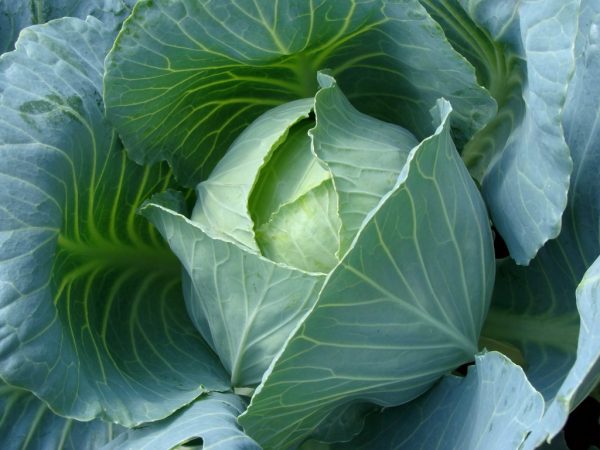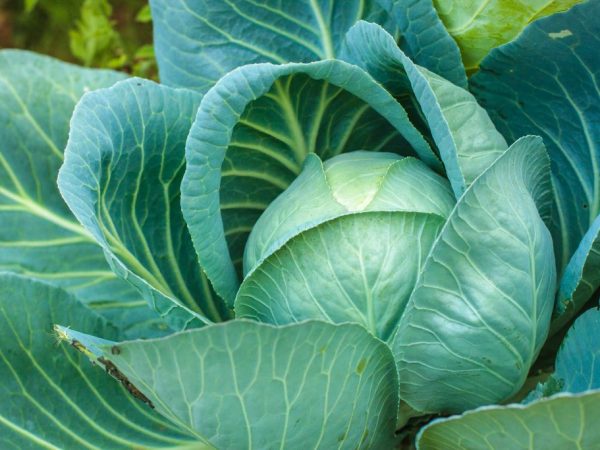The best cabbage varieties for Siberia
Cabbage varieties for Siberia were bred taking into account the climatic features of this region. They are highly cold-resistant, resistant to constant weather changes and are resistant to a number of major diseases.

The best cabbage varieties for Siberia
White cabbage
The white-headed variety is most often grown in Siberia. The vegetable is used for sourdough and salting. It is stored in this form for a long time. It is better to grow white-headed varieties using the seedling method. It is not recommended to plant varieties in Siberian weather conditions directly with seeds in the ground.
Early varieties and hybrids
The best cabbage varieties for Siberia are early maturing. They have time to ripen before the onset of cold weather.
June
The early ripening June varietal variety makes it possible to harvest the first crop after 60-70 days after sowing. Her heads of cabbage are round, weighing an average of 2.5 kg, with an average density. This cabbage, grown in Siberia, is considered one of the most resistant to cracking.
Zarya
The result of selection - the ultra-early ripening hybrid Zarya f1 allows you to grow the first crop of vegetables in 40-45 days. Their heads of cabbage are small, 1.0-1.5 kg each, round in shape, with an average density. The hybrid has excellent taste characteristics; it is most often used fresh.
Hope
This is an early high-yielding varietal species: Nadezhda produces 5-7 heads of cabbage weighing up to 4.5 kg per 1 sq. m of landing area. It perfectly adapts to the harsh Siberian climate and withstands the low temperatures of cool summers.
Mid-season varieties and hybrids
Mid-season white-headed varietal species and hybrids are suitable for cultivation in open beds and in closed greenhouse conditions.
Present
Gift - one of the best varieties of white cabbage for Siberia and the Urals, most often grown for the purpose of pickling and pickling. Its vegetative period from the date of planting of seedlings, which is planted in June, until the collection of the first vegetables is 110-120 days. His heads of cabbage are round, slightly flattened, dense. The mass of one vegetable is 2.5-4.5 kg.
Glory-1305
The classic white-headed varietal variety Slava-1305 has become known for its high yield. Round vegetables with a dense structure weighing 2.5-4.5 kg can be harvested after 85-100 days from the date of transplanting.
Anniversary
The Jubilee f1 hybrid ripens on average in 90 days. The mass of high-density vegetables ranges from 1.5 kg to 4 kg. The hybrid has a long shelf life and taste characteristics, therefore it is used in any form: fresh, fermented, salted.
Late-ripening varieties and hybrids

Late-ripening varieties can be stored for a long time
Late-ripening varietal and hybrid varieties in the Siberian region are recommended to be grown in insulated greenhouses. In open beds, the Siberian climatic conditions do not allow vegetables to ripen, but these vegetables have a longer shelf life.
Amager
The technical maturity of vegetables occurs 4 months after transplanting. This late species has rounded flat heads of cabbage with an average weight of 3.0-3.5 kg. In the process of storing Amager, its taste is not lost, but becomes better.
Creumont
The Creumont-f1 hybrid is a product of selection, it gives the first harvest on the 125-135th day. Heads of cabbage are medium in size, 2 kg each, very dense, round, with excellent taste characteristics. This late variety has established itself among the gardeners of Siberia, due to its long shelf life, reaching more than 6 months.
Cauliflower
Another variety of cabbage for cultivation in the Siberian region is cauliflower. It requires good illumination and heat from the sun, however, some varieties have adapted to the short Siberian daylight hours, rare sunny days, and even tolerate slight frosts.
Cauliflower can withstand temperatures as low as -5 ° C.
Movir
The Movir-74 cauliflower variety is ultra-early, ripening in 55 days, so it can be planted even outdoors. The fruits are white and weigh up to 1.3 kg. The cold-weather tolerant variety can endure both the cool Siberian summers and the hot conditions of other regions.
Snowball
Ripening in 2 months, the Snow Globe takes root well on open soil, withstanding frequent cold snaps and showing high resistance to diseases. Its distinctive characteristics include a long shelf life. Vegetables grow up to 600 g, dense, lumpy, regular symmetrical shape.
Color express
The early ripe Tsvetnoy Express is considered one of the best in Siberia in terms of yield and frost resistance. The growing season for ripening is no more than 60 days from the date of sowing with seeds. The technological maturity period can be reduced to 55 days when the Colored Express is cultivated in a greenhouse. The average weight of vegetables is 0.5 kg.
Broccoli
A number of varietal varieties of broccoli are suitable for Siberia and the Urals.
Caesar
A hybrid variety of broccoli Caesar f1 can delight with a harvest of vegetables several times in one gardening season, quickly tying new vegetables immediately after cutting the cabbage heads. It gained its fame thanks to its excellent taste characteristics and the ability to keep fresh for a long period. It is resistant to most common cruciferous diseases. The hybrid gives large yields of vegetables of 0.6-0.9 kg.
Vitamin
Early ripening vitamin broccoli in the growing season is no more than 65-70 days from the date of planting seedlings. Its disadvantages include a small mass of heads (up to 0.25 kg) and short storage. It is recommended to use it immediately for food or canning.
Peking cabbage and ornamental cabbage
Some Siberian summer residents grow Peking cabbage varieties suitable for Siberia.
- Vesnyanka. This early variety ripens 35 days after planting and is ready to withstand light frosts down to -10 ° C.
- Orange tangerine. The vegetative period of this cabbage variety is about 40 days and is considered one of the most productive of the Beijing varieties. This type of Peking cabbage for Siberia produces vegetables weighing up to 1 kg.
Among the decorative varieties, Siberian summer residents have adapted to growing an early ripe high-yielding hybrid Victoria. Its heads weigh up to 2 kg. The unpretentious Victoria variety maintains yields even in cold conditions. The decorative varieties Kudesnitsa and Lenok are slightly less popular.


